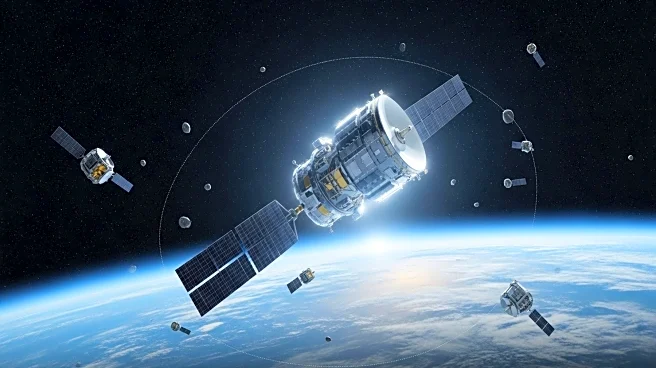What's Happening?
Engineers are continuously pushing the boundaries of scale in various technological fields, as highlighted in a recent issue focusing on their achievements. They have scaled the point-contact transistor into a product manufactured in vast quantities, estimated at 13 sextillion units between 1947 and 2018. Engineers are also sequencing the genomes of 1.8 million species and addressing potential catastrophes like the Kessler syndrome, which threatens satellites in low Earth orbit. The issue explores how engineers create scales for unmeasured phenomena, such as determining when AI achieves human-level intelligence or measuring the absence of matter in a vacuum. Challenges in scaling technologies for mass adoption, such as humanoid robots and onshore wind turbines, are also discussed. Infographics play a crucial role in conveying complex data, helping readers understand the scale of carbon dioxide emissions and interstellar distances.
Why It's Important?
The advancements in engineering scale have significant implications for various industries and societal progress. The ability to manufacture transistors in such large quantities has revolutionized electronics, impacting everything from consumer devices to complex computing systems. Sequencing genomes on a massive scale can lead to breakthroughs in medicine and biodiversity conservation. Addressing the Kessler syndrome is crucial for maintaining satellite operations, which are vital for communication, navigation, and scientific research. The development of humanoid robots and wind turbines represents potential shifts in labor and energy sectors, respectively. Infographics enhance public understanding of these complex issues, fostering informed decision-making and policy development.
What's Next?
Future developments in engineering scale are likely to focus on refining technologies for broader adoption and addressing emerging challenges. Engineers may continue to innovate in AI, aiming for human-level intelligence, which could transform industries and daily life. The transportation and deployment of larger wind turbines will require new logistical solutions. As engineers tackle these challenges, collaboration with policymakers and industry leaders will be essential to ensure safe and efficient integration of new technologies. Continued emphasis on data visualization will aid in communicating these advancements to the public and stakeholders.
Beyond the Headlines
The ethical and cultural implications of scaling technologies are profound. As AI approaches human-level intelligence, questions about privacy, employment, and ethical use will become increasingly important. The expansion of humanoid robots raises concerns about human interaction and societal roles. Environmental impacts of large-scale manufacturing and deployment, such as carbon emissions and resource use, must be carefully managed. Engineers and society must navigate these complexities to ensure technological progress aligns with ethical standards and cultural values.












